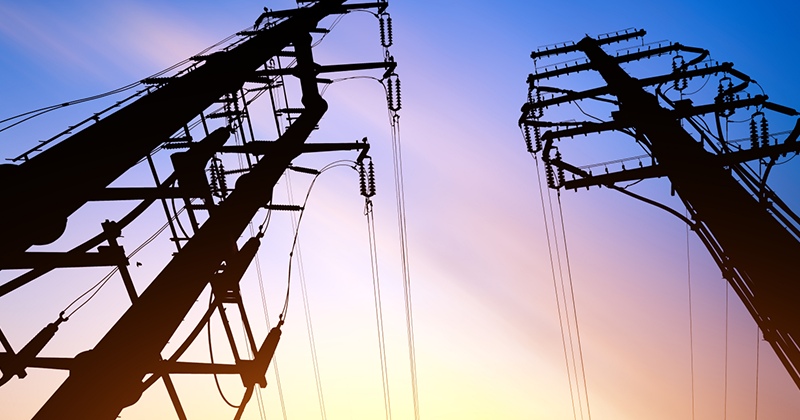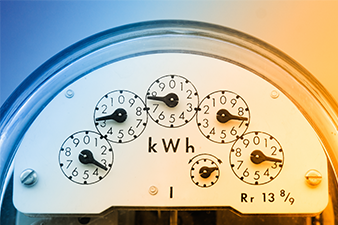
As of this writing, we are well over three years beyond the initial shock of the COVID-19 pandemic. Utilities have been dealing with post-COVID whipsaw effects of higher prices, higher interest rates, and evolving objectives.
During and before the pandemic—from 2019 through 2021 and beyond—many states and utilities adopted 100% clean energy or net-zero policies. As they pursue these net-zero strategies, utilities are facing large investment needs.
- For example, gas utilities are seeking ways to reduce methane emission profiles, through both lower emissions fuels (hydrogen and renewable natural gas) and replacement of leak-prone pipes.
- Power utilities are preparing for increased vehicle and building electrification, which some believe could increase electricity demand by 50% or more over the long term.
- Power generators are under pressure with lower spark spreads, while facing increasing sustenance capital and ongoing O&M needs as they continue to be called upon by system operators to balance more variable-output renewables. Those generators are investing in renewables as well.
With anticipated high capital spending ahead, the utilities industry faces both tailwinds and headwinds in planning and deploying capital.
TAILWINDS
Possibly the most significant tailwind in the past year or two is the establishment of policy support and funding for infrastructure projects via the Infrastructure Investment and Jobs Act (IIJA), enacted in November 2021, and the Inflation Reduction Act (IRA), enacted in August 2022. The IIJA allocated more than $80 billion toward electric vehicle charging, power infrastructure and transmission. The IRA has allocated approximately $370 billion toward energy-related investments. Many of these incentives are in the form of loans and tax credits across the clean energy supply chain.
Citing the fact that many tax credits do not have spending caps, Goldman Sachs points to significant IRA spending—“creating the most supportive regulatory environment in clean tech history”—that will invigorate asset development and investment returns and provide rich capex opportunities for investors.
Continued interest by both public and private investors, aided by government support, has put focus on technology development across the energy industry. These technology development activities allow industry participants an opportunity to test and deploy new technologies for lower emissions options, improved and hardened infrastructure, and fuel diversity.
Another benefit of federal funding of energy infrastructure via the IIJA and IRA is that it reduces financial (rate) impacts on retail customers of utility investment.
Finally, another tailwind is the generally strong public and regulatory support in many jurisdictions for utility investments in system modernization and net-zero initiatives.
HEADWINDS
Of course, utilities face headwinds as they deploy billions in capital. Edison Electric Institute projects that its member investor-owned electric utilities will spend more than $155 billion in each of 2023 and 2024.
First, interest rates have been ratcheting higher over the past 12 months, and it is unclear whether the Federal Reserve’s continuing battle against inflation will further affect them. To date, higher rates have been driving interest costs higher, in some cases narrowing utilities’ cash flow cushion. Until recently, Standard & Poor’s had a negative outlook for utility credit ratings but has recently upgraded to stable, reflecting lower inflationary pressures, recently lower natural gas prices, and improving economic indicators.
However, despite this positive news, managing high capital spending and growing debt (leverage) and debt service requirements together with lower free cash flow metrics remain risks to the sector.
On a more practical level, the challenges and delays in getting infrastructure built, particularly with permitting barriers and local opposition, remain in place. Recent discussions in Congress about potential permitting reform are still a work-in-process. Updates to the National Environmental Policy Act to set time limits on project review were included in the June 3 debt ceiling law, but most observers and key Congress members believe that broader reform is needed. And it will take time for any reforms to be implemented, even if enacted.
Finally, utilities continue to have cost management challenges as they contend with supply chain issues and labor availability and cost which now seem more structural than COVID related.
CONCERNS
Aside from both headwinds and tailwinds for utilities, there are some longer-term concerns that utilities and other stakeholders have despite anticipated investment in the sector.
First is how utilities and regulators will guide the gas and power grids through a net-zero energy transition. Particularly, how the industry should manage the pace of generator retirements and capacity performance of the existing and future generation fleet. This may affect the pace of transition.
Second, as investments increase and the potential for rising fuel costs endures, utilities and regulators continue to monitor energy affordability for customers. There are some indications that the combination of higher levels of investment, inflation, and fuel costs caused an uptick in utility rates in 2021 and particularly in 2022. It is unclear whether this is an aberration due to an unusual geopolitical and economic environment in 2022 or signs of a secular trend.
GROWING ROLE OF ENERGY EQUITY AND ENVIRONMENTAL JUSTICE
Not discussed by many industry observers is the increasing role of energy equity and environmental justice (EE/EJ) in the development and implementation of utility investment and capital strategies. These considerations will affect the nature and location of utility infrastructure and the process by which those determinations are made.
Both the IIJA and IRA have provisions that expressly require consideration of EE/EJ factors as well as incentives for facilities that advance EE/EJ goals. States as well are advancing these efforts by way of grid modernization programs (mandated by enabling legislation) and resource planning initiatives. For example, Illinois’ Climate and Equitable Jobs Act requires utilities to prepare multi-year grid plans that support bringing 40% of benefits of grid modernization and clean energy, including distributed energy resources, to “equity investment eligible communities.”
Organizational changes have been made as well to increase focus on EE/EJ issues. The IIJA created an Office of Public Participation within FERC, and the Department of Energy (DOE) has an Office of Economic Impact and Diversity, each of which has energy justice as a core goal. For states, the National Association of Regulatory Utility Commissioners supports state efforts to advance energy justice efforts through initiatives in partnership with DOE, the National Association of State Energy Officials, the National Governors Association, and others.
Some EE/EJ efforts envision a wider stakeholder process that is not necessarily focused on physical needs (e.g., locations to relieve constraints or charging infrastructure near highly trafficked areas) but also needs and interests of selected constituents, particularly in disadvantaged communities.
It is too early to tell how this will affect energy infrastructure development, but utilities will be spending more time on EE/EJ issues than has historically been the case.
THINGS TO MONITOR
Other developments that utilities and their stakeholders will be closely monitoring include:
- The effects of emerging EPA policy initiatives regarding vehicle emissions and power plant emissions
- Continued commission support for requested rate increases
- Strategic actions by utilities and others – a strategic “sorting out” process for some utilities seeking either to reduce exposure to some utility sectors or acquire complementary business or increase scale
- Balance in real-world operations among three energy sector goals: reliability, affordability, and “clean”
Utilities would also be well served to continue to monitor their financial metrics, measure their pace of investment, and engage regulators as investments in energy transition, grid modernization, resilience, and electrification and decarbonization ramp up.

